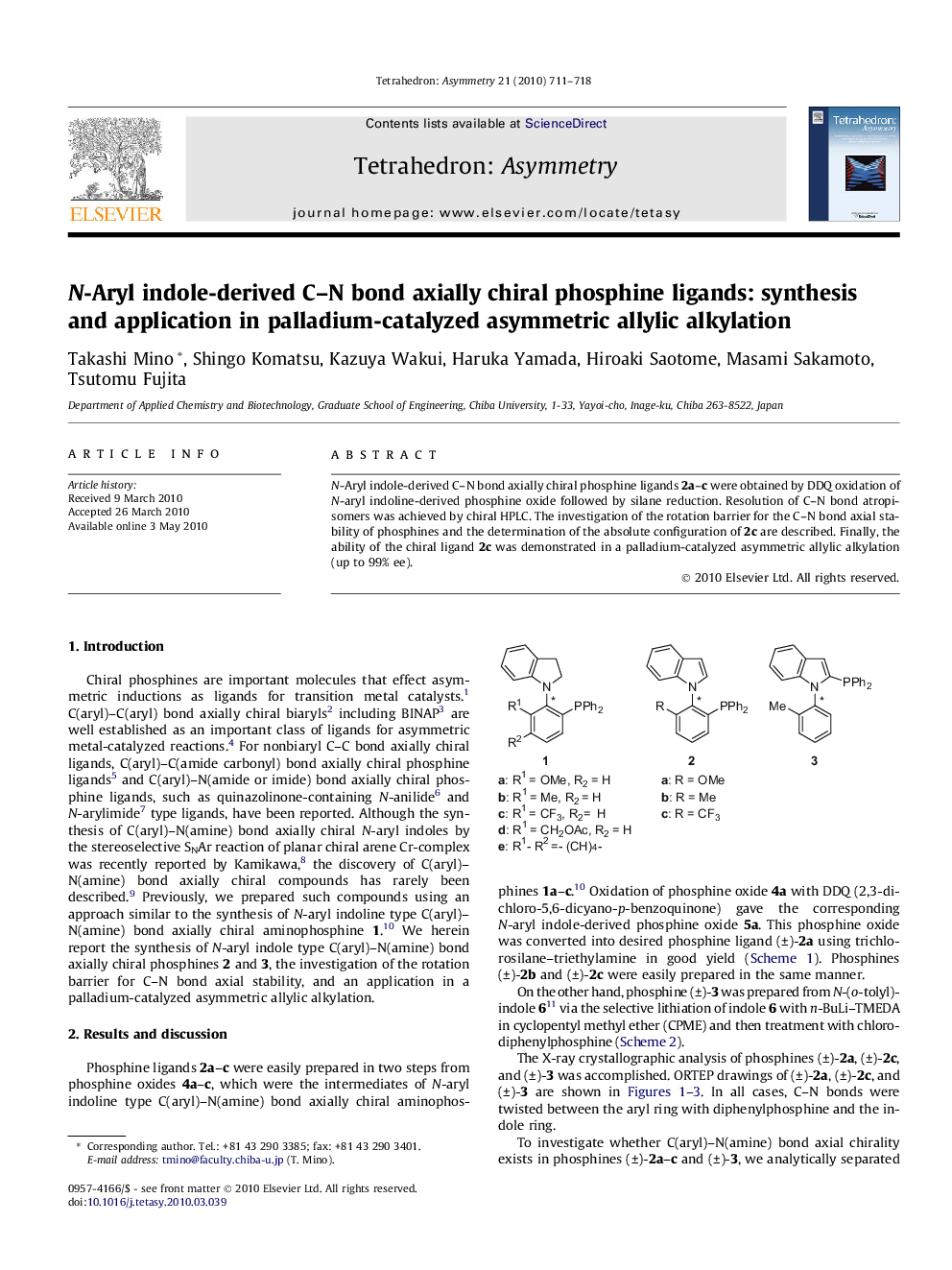| Article ID | Journal | Published Year | Pages | File Type |
|---|---|---|---|---|
| 1349181 | Tetrahedron: Asymmetry | 2010 | 8 Pages |
N-Aryl indole-derived C–N bond axially chiral phosphine ligands 2a–c were obtained by DDQ oxidation of N-aryl indoline-derived phosphine oxide followed by silane reduction. Resolution of C–N bond atropisomers was achieved by chiral HPLC. The investigation of the rotation barrier for the C–N bond axial stability of phosphines and the determination of the absolute configuration of 2c are described. Finally, the ability of the chiral ligand 2c was demonstrated in a palladium-catalyzed asymmetric allylic alkylation (up to 99% ee).
Graphical abstractFigure optionsDownload full-size imageDownload as PowerPoint slide
(−)-N-(2-Diphenylphosphino-6-methoxyphenyl)indoleC27H22NOPEe ⩾ 99% (chiral HPLC)[α]D20=-55.4 (c 0.25, CHCl3)Source of chirality: resolution by HPLC
(−)-N-(2-Diphenylphosphino-6-methylphenyl)indoleC27H22NPEe ⩾ 99% (chiral HPLC)[α]D25=-125.0 (c 0.50, CHCl3)Source of chirality: resolution by HPLC
(R)-(−)-N-(2-Diphenylphosphino-6-trifluoromethylphenyl)indoleC27H19NF3PEe ⩾ 99% (chiral HPLC)[α]D20=-183.4 (c 0.20, CHCl3)Source of chirality: resolution by HPLCAbsolute configuration: (R)
(−)-2-Diphenylphosphino-1-(o-tolyl)indoleC27H22NPEe ⩾ 99% (chiral HPLC)[α]D25=-2.5 (c 1.00, CHCl3)Source of chirality: resolution by HPLC
